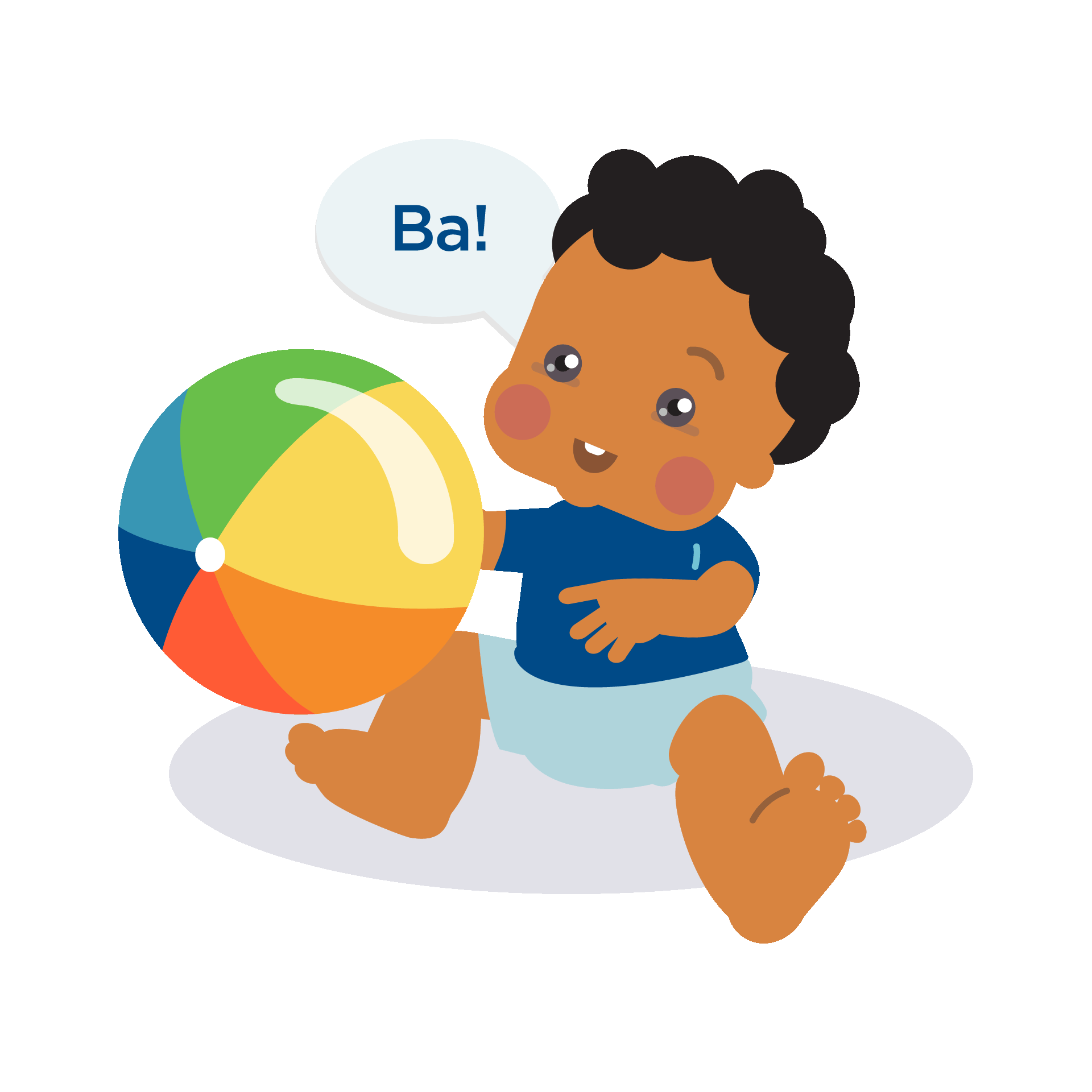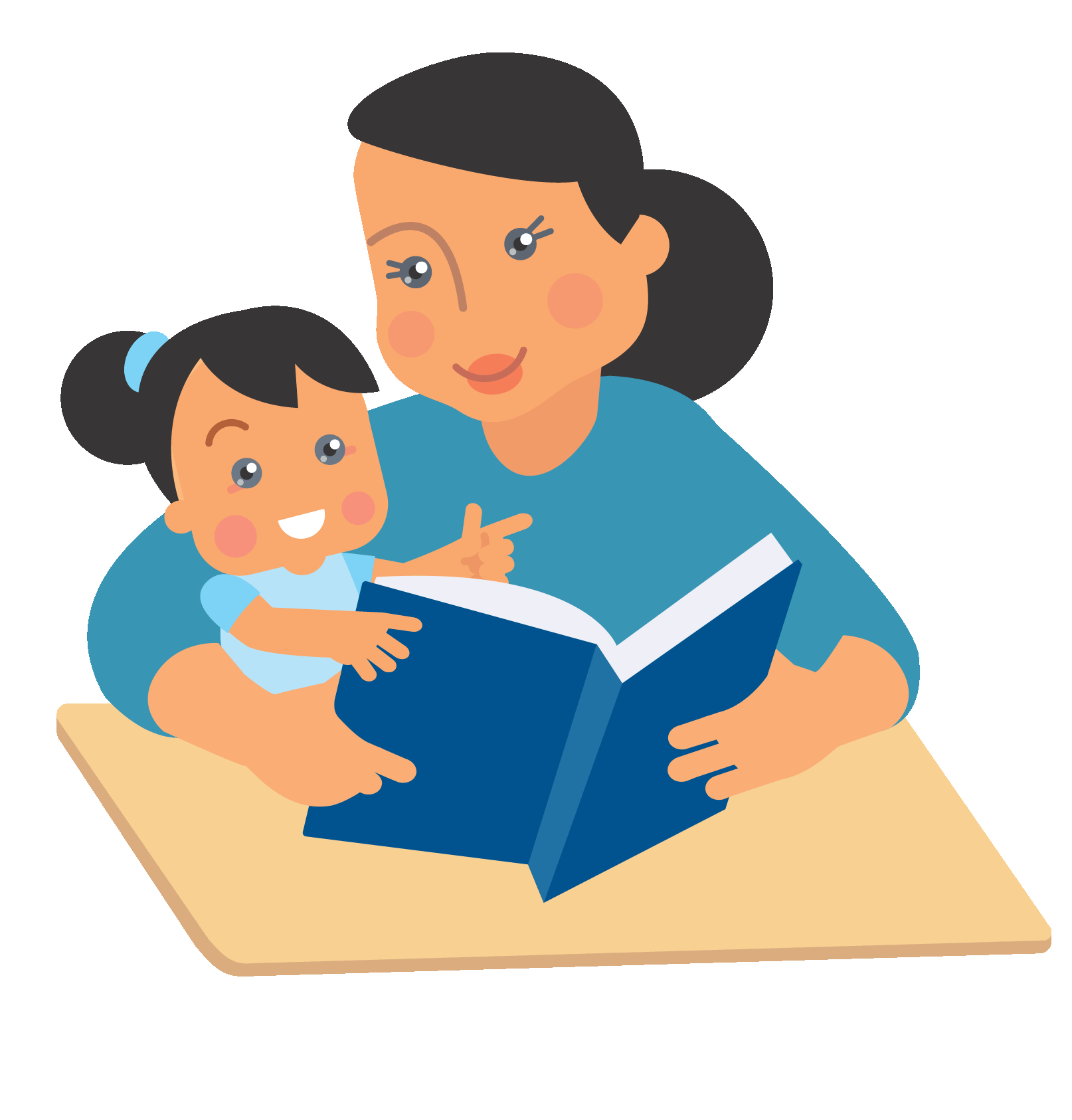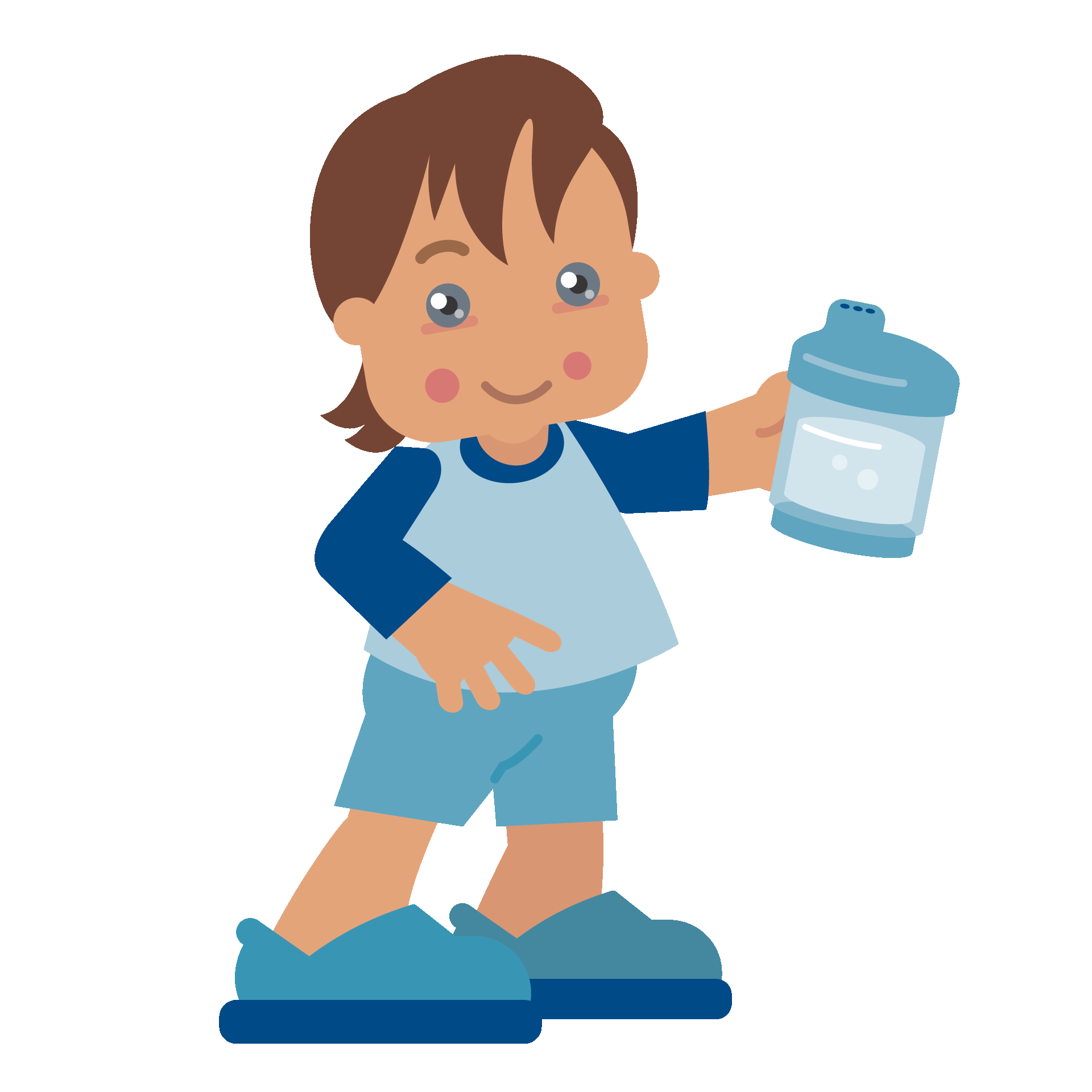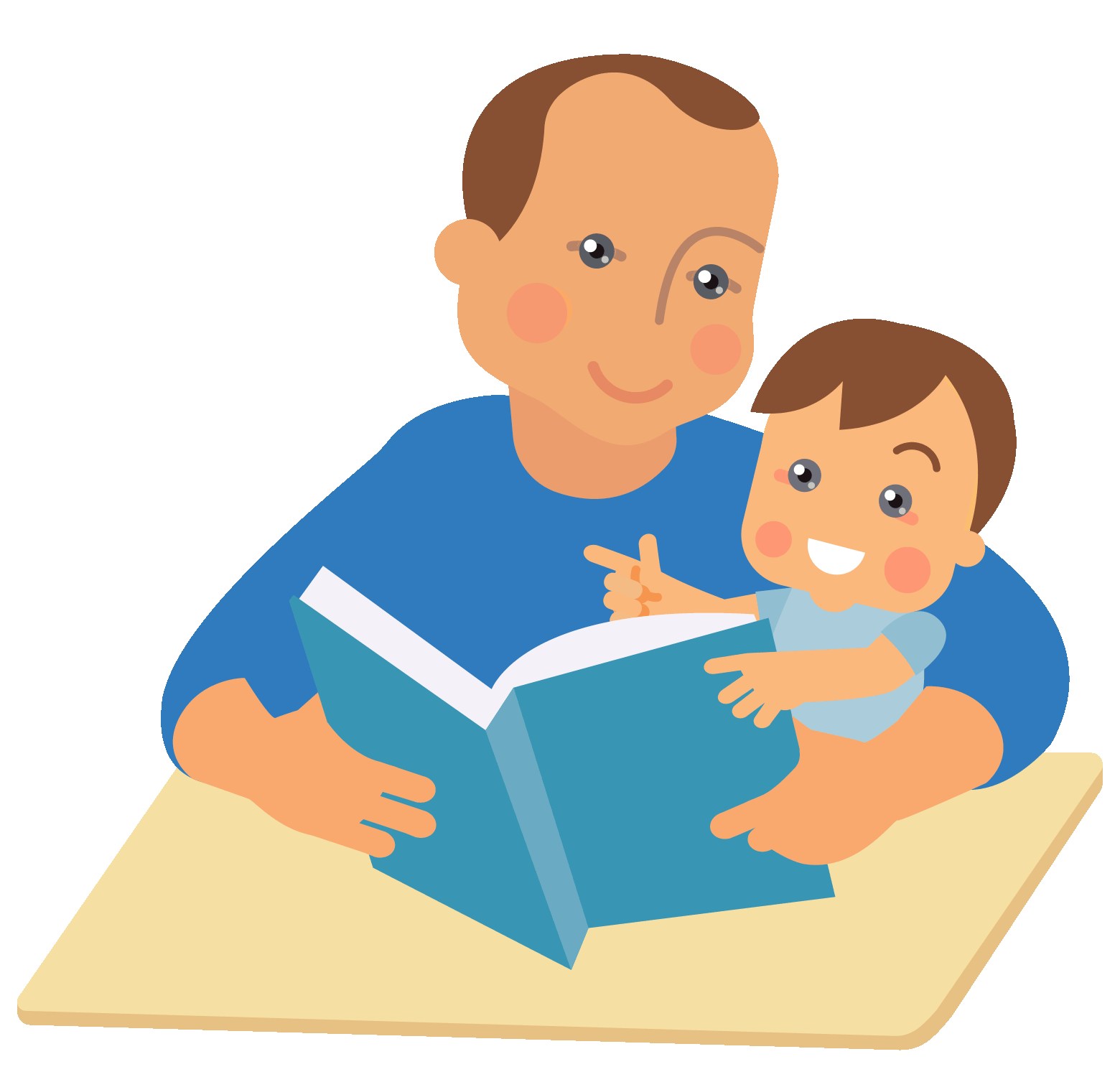Download Activities: English | Spanish | Vietnamese

Repeat and Expand!
(13 to 18 Months)
Listen to what your toddler says, like Ba for ball.
Repeat what they say and add more details:
- Yes, that’s a ball! The ball is red!
Encourage your toddler to say the word again and praise them for trying:
- Can you say, ‘ball’?
By adding more words, you help your toddler learn new words and improve their sounds.
Sing and Gesture!
(13 to 18 Months)
Sing songs with actions, like
- Head, Shoulders, Knees, and Toes.
Do the movements slowly and encourage your child to copy you.
Praise them for joining in, even if their moves aren’t perfect.
Songs with actions, like clapping or pointing, help your child develop both motor skills and language.


Let’s Read Together!
NEW
(19 to 24 Months)
Pick books with bright pictures and easy words.
Point to the pictures and ask questions like,
- What’s this? or Where’s the dog?
Build on what they say:
If they say, Cat, respond with, Yes, that’s a cat! Cats say meow!
Celebrate when they join in:
- Great job finding the cat!
Reading with your toddler helps them learn new words, use their imagination, and develop a love for books.
Use My Words!
(19 to 24 Months)
Listen for two-word phrases like
- More water or Big truck.
Build on their phrases:
- More water? Yes, let’s pour more water into your cup!
Encourage them to repeat your sentences and praise their effort.
By expanding on what your toddler says, you help them learn how to form sentences and express their needs.


I am an Artist!
Give your baby bright, very large crayons or chalk. Broken crayons are easy to grasp. Give them lots of paper to play with. You can use a paper bag from the grocery store. Turn it inside out to make a big piece of drawing paper. Draw with them. Trace around their hand. Make a big face for them to scribble in.
Sometimes they might get frustrated when they can’t draw as well as an adult, so draw what they are drawing. For example, draw lines or circles when they do.
Describe what you are drawing. Talk about the colors and shapes. Ask your child to tell you about their picture. Say something about what they are scribbling, like:
- I see red. You drew beautiful red lines!
At this age, your child’s drawings will look like scribbles, but they are learning about color, and how to hold a crayon to make a mark on the paper. This early scribbling will prepare them for writing and reading in the future.
You Say, I Say!
Help your child build sentences, word by word. If they are saying single words, help them say two words that go together. If your child is climbing up stairs and says: “Up!” add another word.
- Maria, up! or Mommy up! as you climb the stairs together.
If your child is putting two words together like “Mommy up!” then add a third word.
- “Mommy step up!”
Your child will begin talking by saying one word at a time. They will learn many single words. Then they will start putting two words together. Then three words together. Your child is learning to build sentences. Repeat your one year old’s words back to them. This lets them know they are communicating with you and that you understand them!

Read, Read, Read Again

Pick a brightly colored book with big pictures for your one year old to see. Find a comfortable place to sit. Show them the pictures on each page.
Try to read the book three times with your child. If they don’t want to sit for three readings, read the book three different times during the day. The first time you read, point to the pictures on each page and describe them with one word, for example,
- Look, here is a DOG!
The second time you read the book, describe the picture with more words.
- There is the DOG! He is brown and furry.
The third time, help your child point to the picture as you say the word.
- Here is the DOG! and help them point to the dog.
Say, “Can you point to the dog?”
Your baby will love reading with you. You are building a strong bond with them!
Sing and Move!
Pick a simple song and sing it to your child during the day and all week. Sing slowly and make each word clear so that your child can hear and understand the separate words of the song.
After you have sung it several times with your child, leave off the last word of a phrase. See if your child will fill in the word.
If you are singing ‘Twinkle, Twinkle Little Star,’ leave off the word “star” like this:
- Twinkle, twinkle, little ______ (and let your child say or sing the word, “star”)
If they need help, sing the word for them. Try again with another phrase of the song.
Make up hand or finger motions to go with the song. See if your child remembers the motion, the word, or both together. Soon they may be saying “star” or doing the motions to let you know they want you to sing the song with them!

Let’s Talk About the Weather

When you are getting your child dressed each morning, talk with them about what the weather will be that day. Talk about the weather and the clothes you will put on. You can say,
- It is very sunny outside today. It is going to be hot! Let’s put on a short-sleeved shirt and shorts so you will be cool.
When you go outside, talk with your child about how the weather feels.
- Do you feel the rain drops? They are wet!
At the end of the day, talk more about the weather that day.
- It was raining today. Did you play outside in the puddles? Did you get wet?
Talking together about the weather teaches your child words about temperature, clothes, and feelings.
